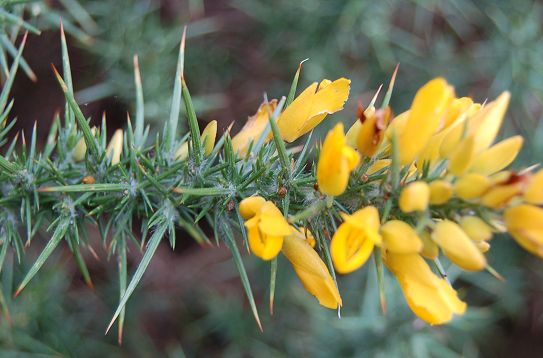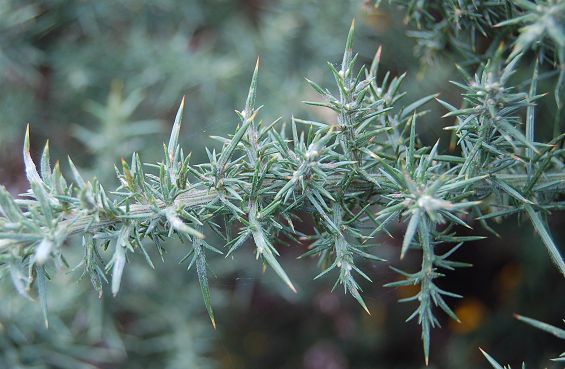Western Gorse or “normal” Gorse?
Last year we found what we thought was western gorse, Ulex gallii, growing on Rudland Moor. However, I was never confident about separating the two species. This autumn (October 2006) I spent a few days in Ireland, where there were two quite distinct gorses growing together. Although it was hard to define exactly what the differences were they had quite a different jizz, which I will try and summarise.
First of course was the obvious fact that one kind (U. gallii) was flowering profusely, whereas the other had ripe, black seedpods and tiny flower-buds. (U. europaeus).
Second, the flowering one was a slightly yellowish green overall, whereas the non-flowering one had a distinctly blue cast.
Third, the flowering one had masses of small subsidiary spinelets obscuring the twigs, but in U. europaeus the (grooved) twigs could be seen between separate whorls of spines. This distinction was not absolute, but there was certainly a strong tendency for the presumed U. gallii bushes to have the “fuzzy” effect.
Fourth, the bushes of U. gallii were in general smaller, with slightly less daunting spines, and occurring as single bushes – or at most in small groups, never forming extensive, tall thickets as U. europaeus does.

Western Gorse (U. gallii) showing the green spines, hidden twig and autumn flowers.

Common Gorse (U. europaeus) showing the bluish spines, visible twig and no open flowers.